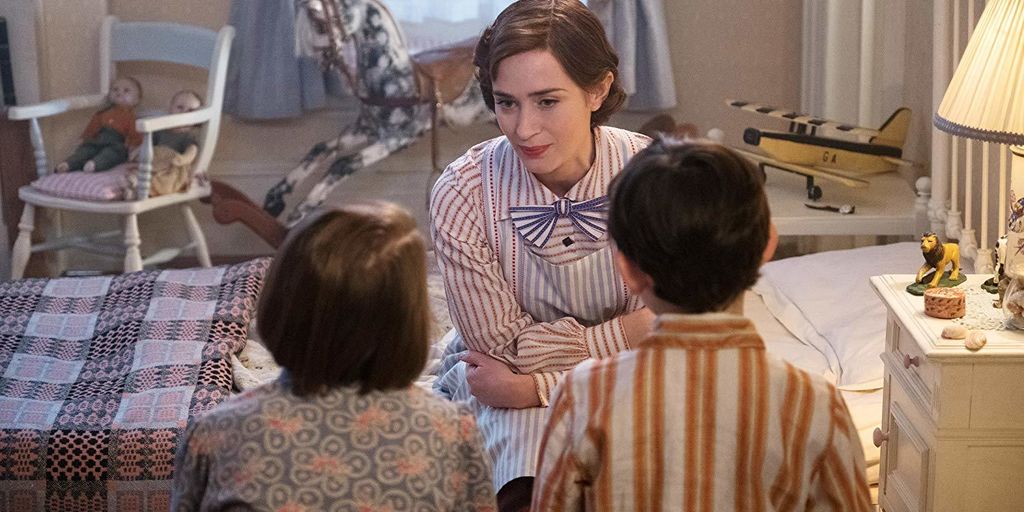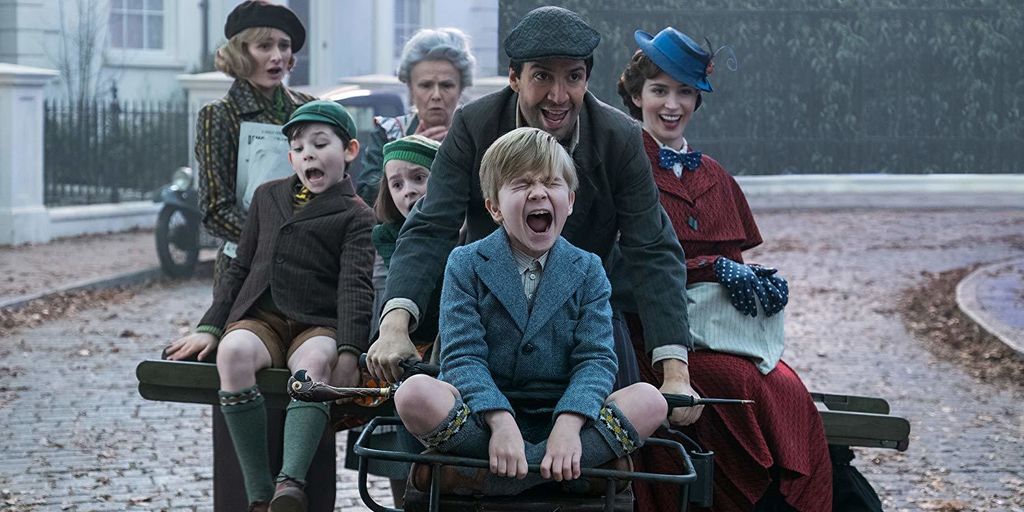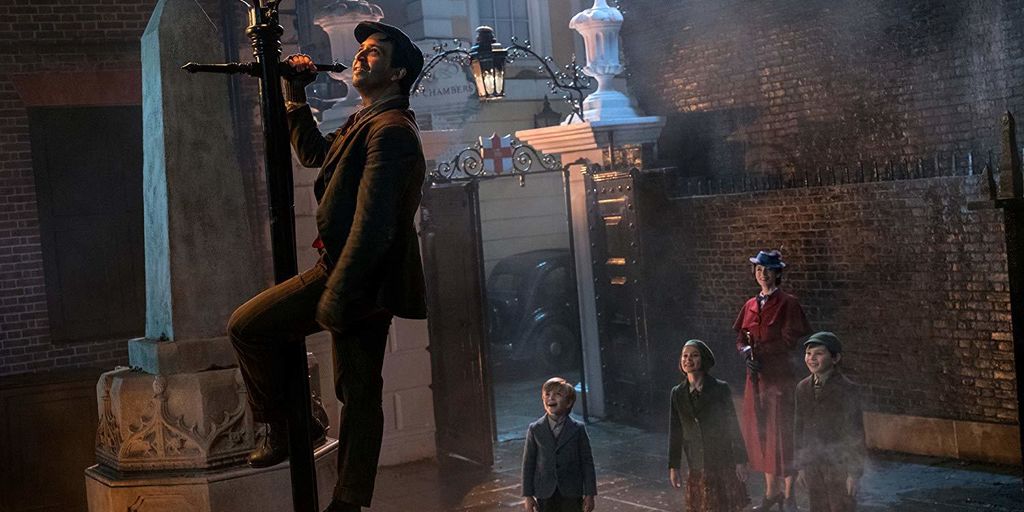Foggy streets, neglected children and streetlights that must be lit, or dampened, by hand.
It is Depression-era London, and some decades since Mary Poppins, the prodigal nanny with a flair for good manners and thrills in equal measure, has visited these moody streets.
As we watch cockney lamplighter Jack (a fantastic Lin Manual Miranda) make his morning round through the neighbourhood, we feel as though we are back in the London that Mary Poppins made so famous when she first visited the Banks children.
The Admiral still keeps time with his cannons, the Banks family still live within their home on Cherry Tree Lane and trouble lurks just around the corner.
Michael Banks (Ben Whishaw) and his sister, labor activist Jane (Emily Mortimer), live together in the home with chaotic housekeeper Ellen (Julie Walters) and Michael’s three children: Annabel (Pixie Davies); John (Nathaneal Saleh); and Georgie (Joel Dawson).
They’ve recently lost their mother, Mrs Banks, to an illness.
It seems in the chaos of his wife’s death, Mr Banks has taken out a loan against the family home and defaulted with overdue payments.
The wolfish employees of the Fidelity Fiduciary Bank come to warn Mr Banks that the house will be repossessed unless he can find evidence of a certificate of shares by midnight on Friday.
As Mr Banks and his sister turn the house upside down looking for the missing certificate, the three Banks children cut through the park to the shop to pick up some groceries.

Georgie, who of all three Banks children is perhaps the only one to still hold some childish wonder, brings a kite along from the attic and as it grows blustery outside, the children are visited by Mary Poppins (an excellent Emily Blunt).
Back in Cherry Tree Lane, the elder Banks children are shocked to discover Mary Poppins has not aged a bit. Mr Banks reluctantly agrees to have her stay to care for the children.
Mary Poppins wastes no time in bringing some much-needed fun and frivolity into the lives of the younger Banks children.
At bath time, they plunge into the bubbles to discover an amazing underwater world and are surrounded by animated fish and dolphins.
Music throughout the film was composed by Marc Shaiman, with lyrics co-written by Shaiman and Scott Whitman.
The soundtrack is nostalgic, joyful and lighthearted, although I cannot imagine these songs will become part of everyday lexicon in the same way that the original Just a Spoonful of Sugar, Feed the Birds or Supercalifrenchalisticexpialidocious have become.

Later that night, the children hatch a plan to sell their mother’s Royal Doulton pottery bowl to help their father save the house from repossession.
In a subsequent argument, the bowl is chipped and broken.
Mary Poppins, and lamplighter Jack, help the children to visit the incredible animated pottery world within the bowl and repair the damage they’ve caused.
Back in London they meet Topsy (Meryl Streep), Mary Poppins’ peculiar Eastern European cousin, who agrees to fix the chipped bowl.
This segment was a little cloying to me, although, as always, there is a wonderful message in the lyrics.
The best song and dance number of the film is undoubtedly the lamplighters number, where Jack and his crew of street lighters perform for Mary Poppins and the children with incredible moves that are reminiscent of the chimney sweepers’ rooftop dance from the original 1964 film.
Colin Firth plays unethical and money-grabbing bank president William “Weatherall” Wilkins with aplomb, and comes undone in wonderful style.
Look out for Dick Van Dyke’s cameo performance (the man can still bust a move some 54 years after playing Bert in the original) and Angela Lansbury as the balloon lady.
Mary Poppins Returns is a joyous, nostalgic trip down memory lane that faithfully injects a cast of new characters into a much-loved family story.
There’s new magic and wonders and powerful lessons for life to be enjoyed by young, impressionable minds.
Maybe there are even some for those of us who are a little older and wiser!
